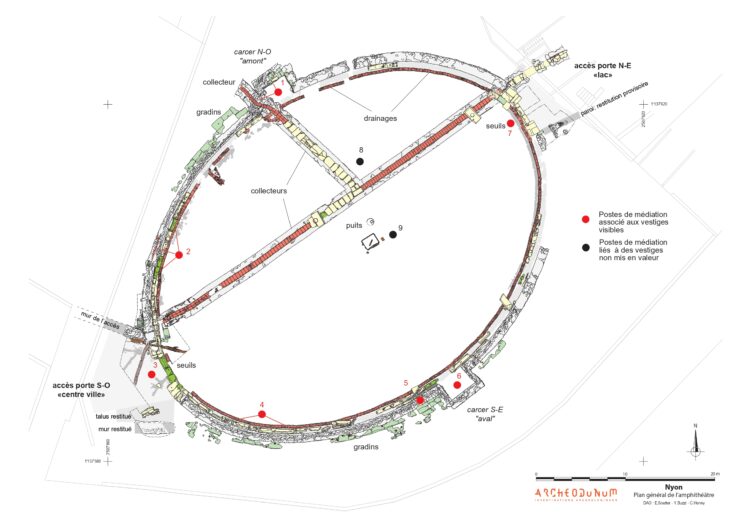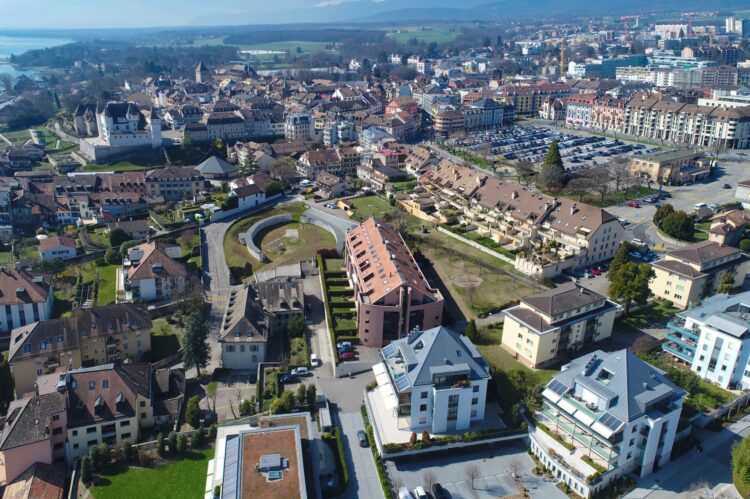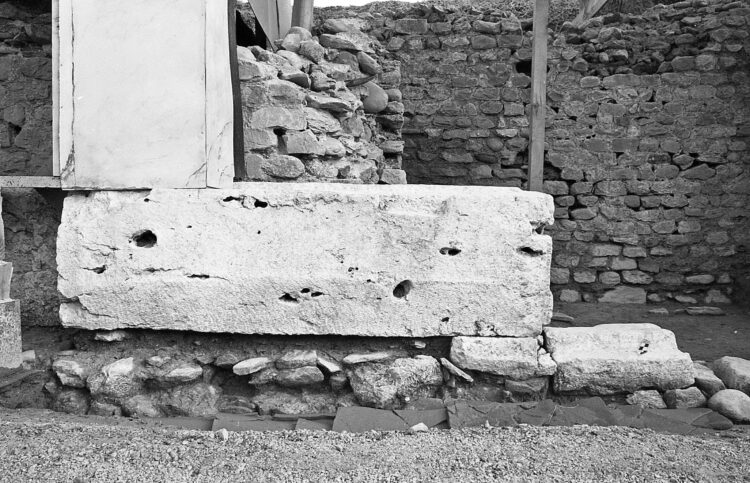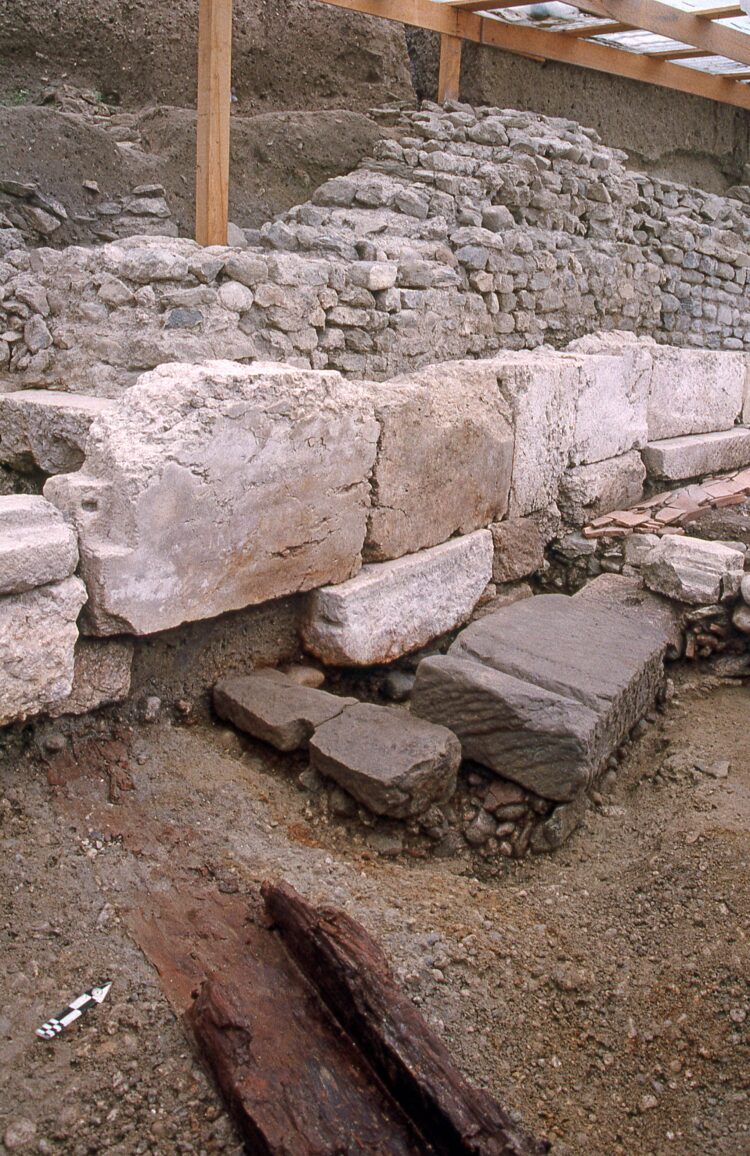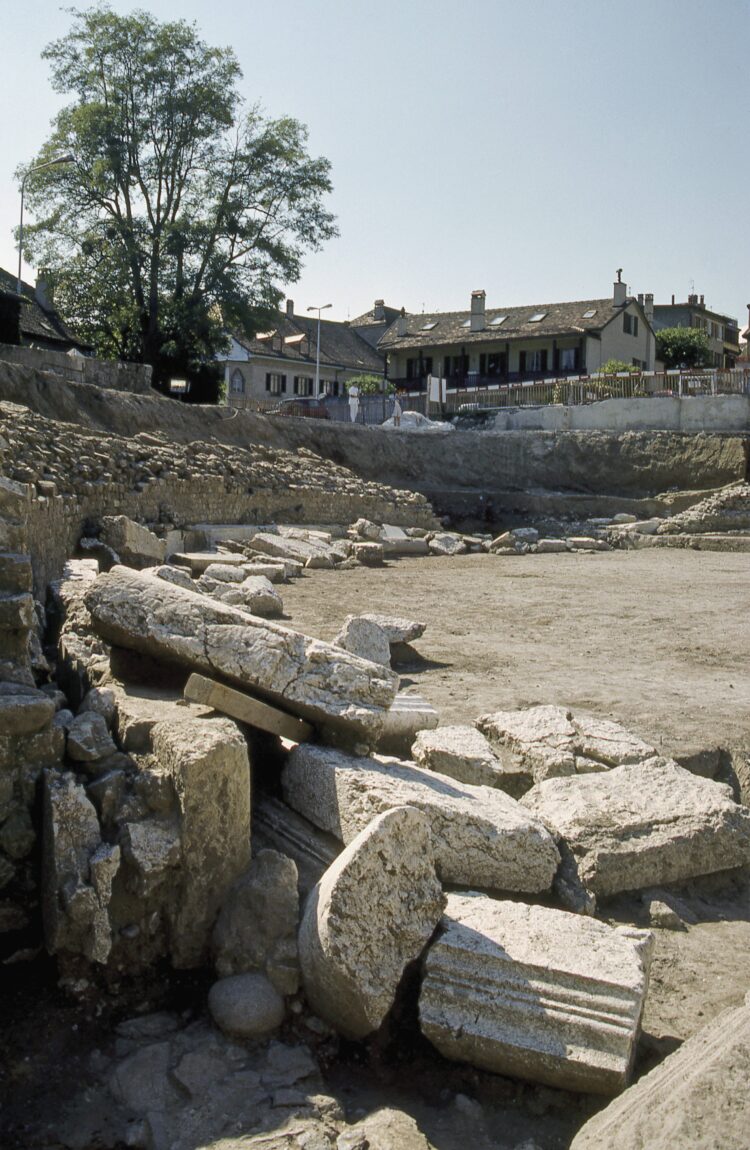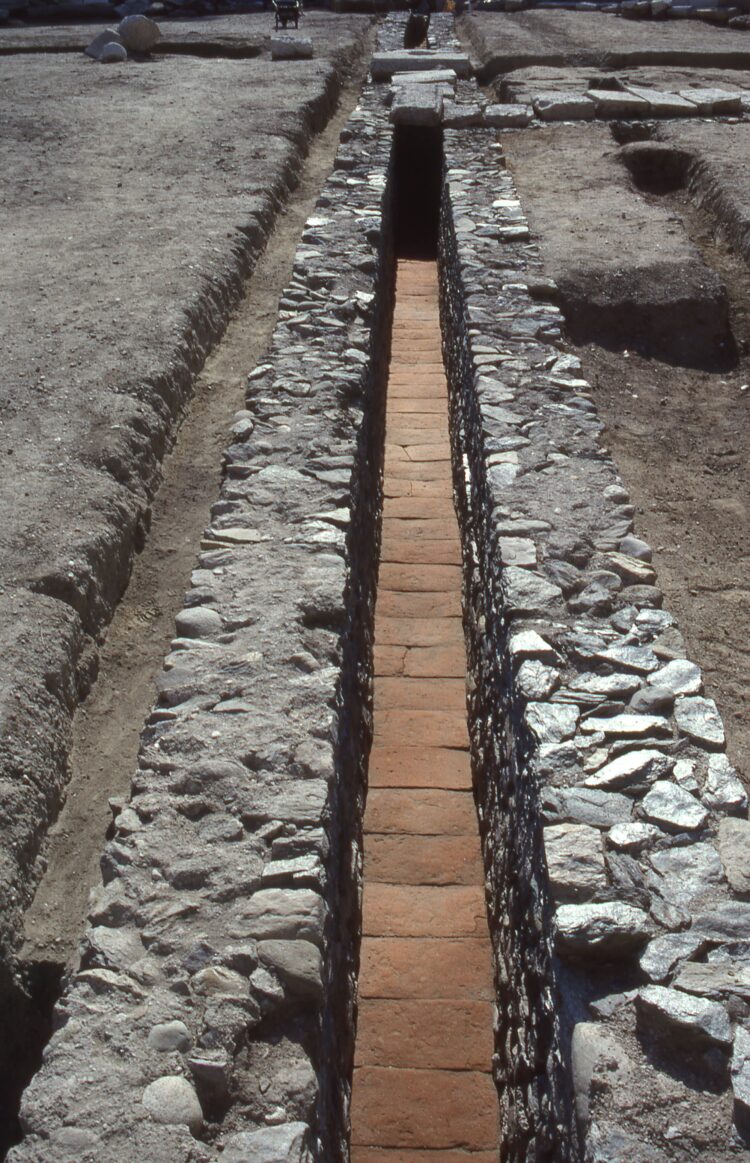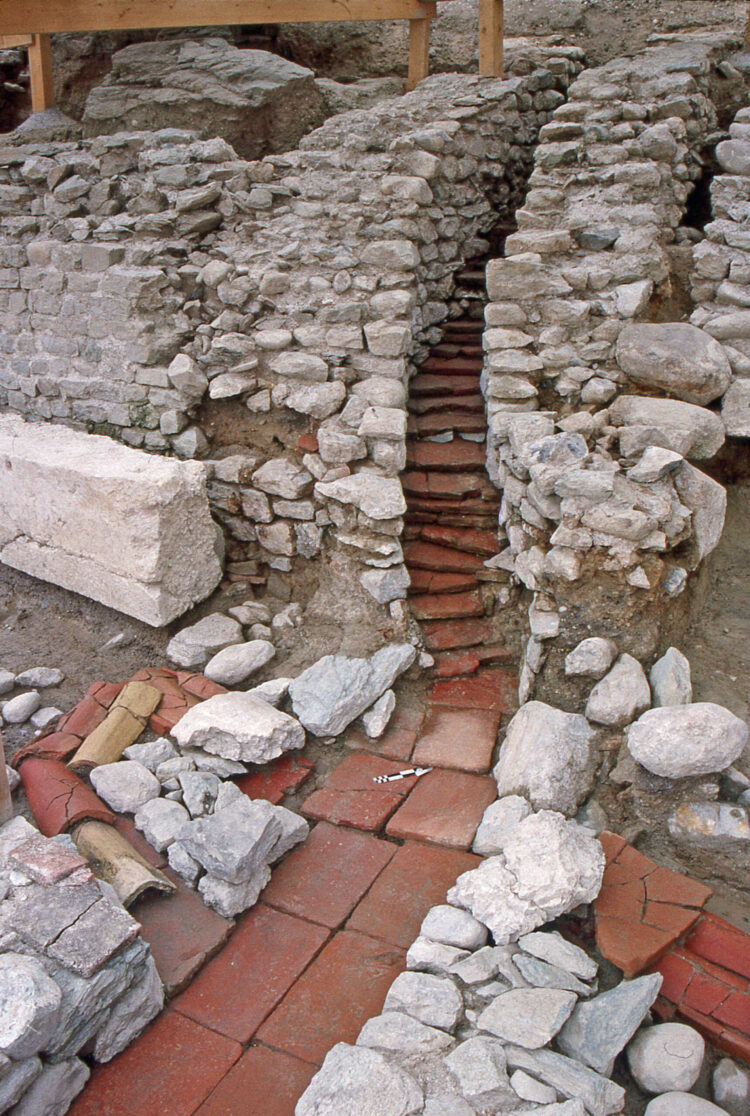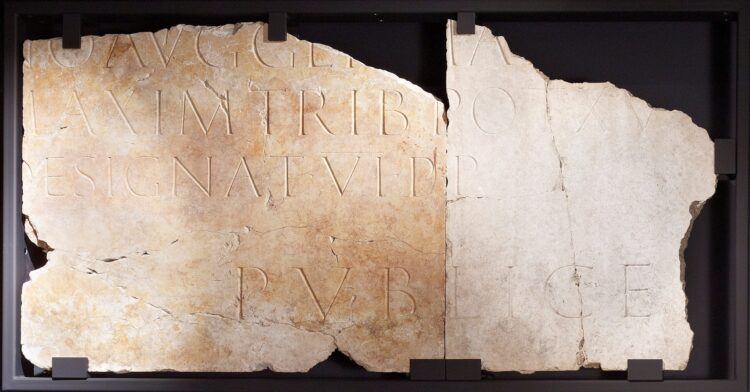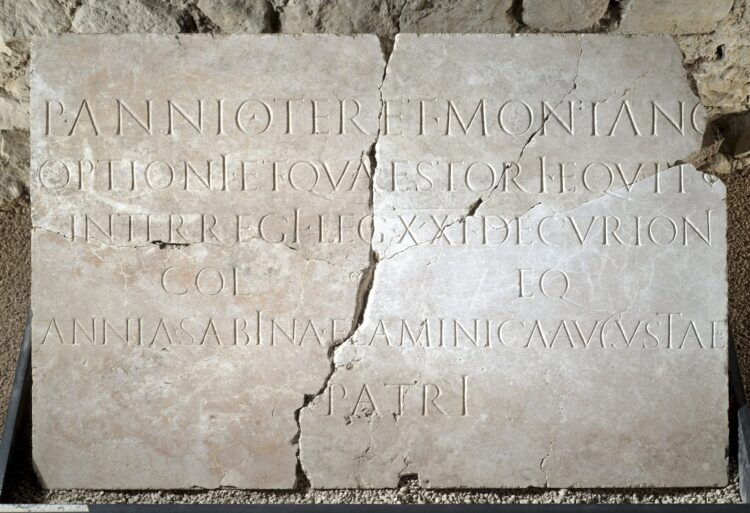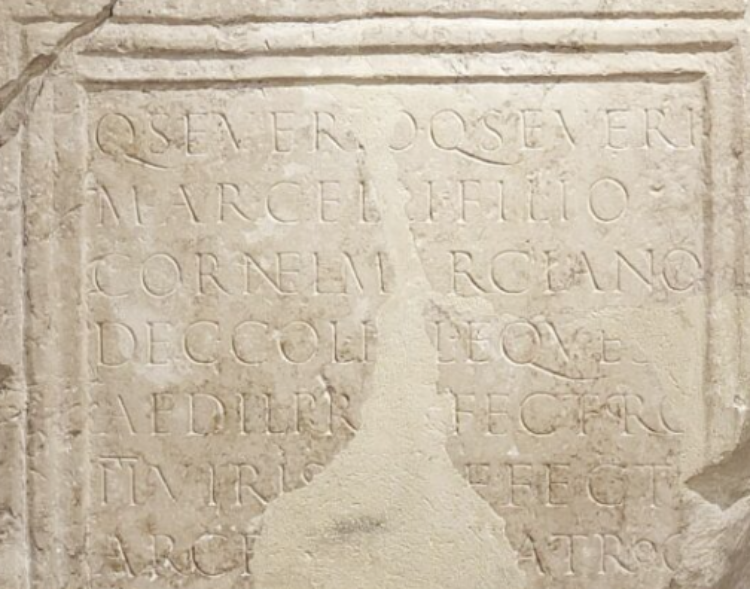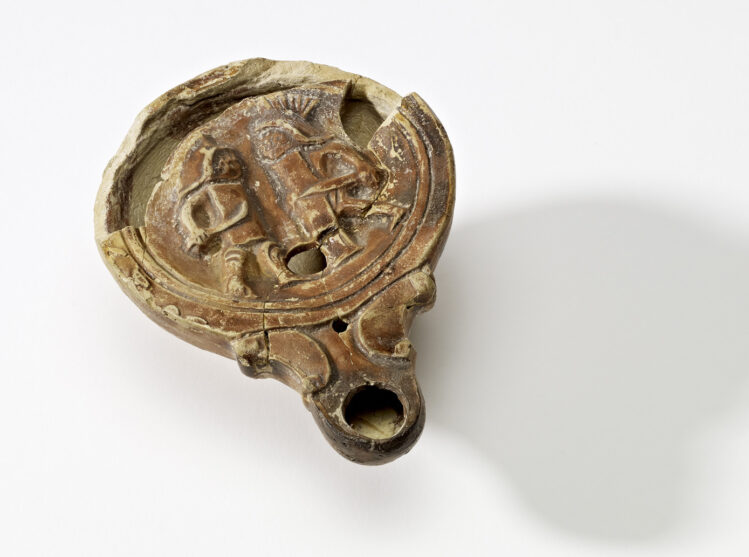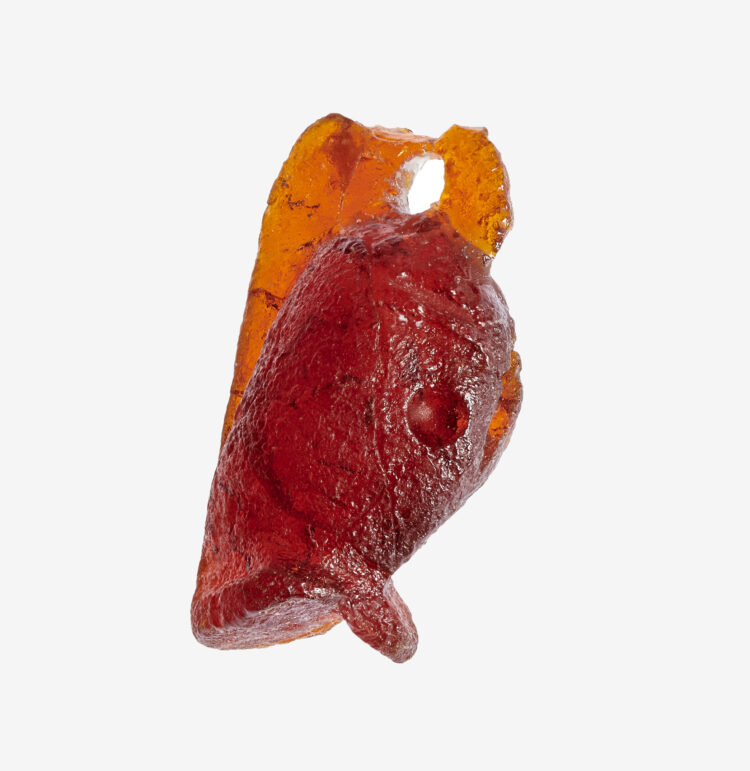The amphitheatre
Complete file
In 1996, the construction of residential buildings along the Rue de la Porcelaine led to the exceptional discovery of Nyon's amphitheatre. Remarkable in terms of its size and preservation, it is one of only eight monuments of its type to have been unearthed in Switzerland. It is classified as a monument of national importance.
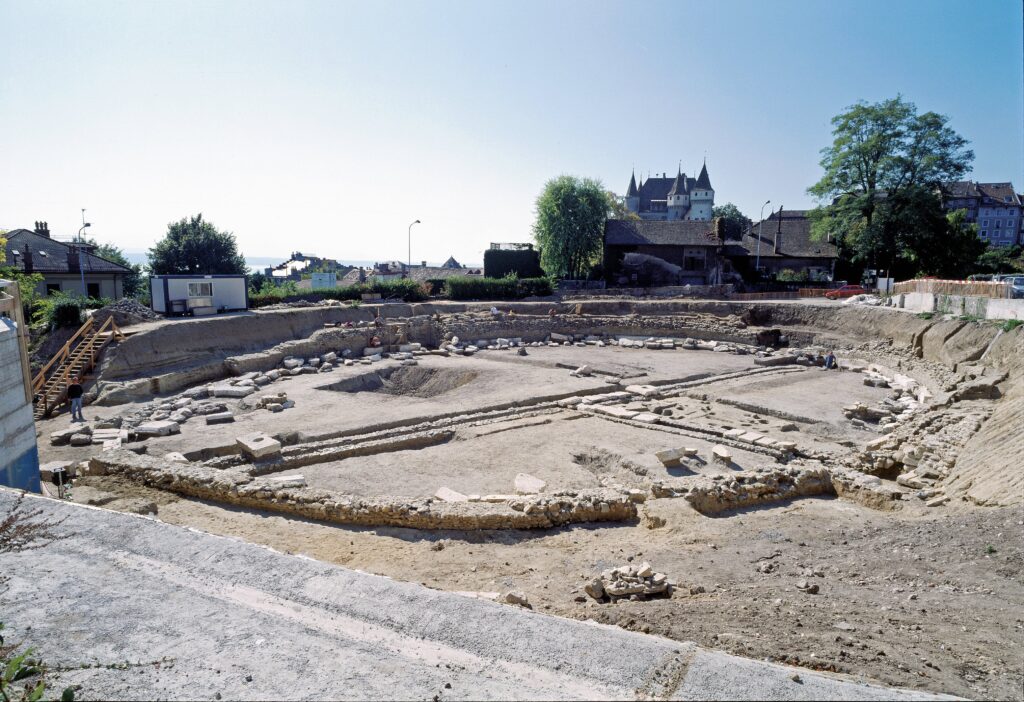
The amphitheatre is located to the north of the old town, below the road leading to the Roman settlement of Lousonna (Lausanne-Vidy). It is built into the hillside, within the confines of a valley. The dimensions of its arena – 50 meters in its long axis and 36 meters in its short axis – place it in the middle of a series of Swiss buildings of the same nature, behind those of Windisch and Avenches and in front of those of Augst-Sichelengraben and Martigny.
It was built in the early 2nd century AD. After being abandoned at the end of the Roman era, the site served as a quarry before being completely filled in by embankments in the 17th century.
As important venues for social and cultural life, amphitheatres were designed to host public spectacles such as gladiatorial combats, animal hunts and sometimes, public executions. In Nyon, the amphitheatre attracted residents of the region, but also those of Genua (Geneva) and Lousonna (Lausanne-Vidy) for major festivals and events. If its total area is not known. Although the total surface area of the amphitheatre is not known, it is possible to reconstruct 17 rows of seating tiers that could seat several thousand spectators.
Current studies show that at least three construction sites were built in succession, corresponding to repairs required following damage probably caused by water. Analysis of the large number of architectural blocks allows us to understand the work of the builders associated with these different stages of construction and repair.
Arena, tiers, doors, water drainage…
The arena had a dirt floor in which pits and postholes were observed in large numbers. They could be linked to stage arrangements or light constructions contemporary with the use of the monument as a performance venue.
A few very damaged blocks of molasse still indicate the presence of the tiers. The first rows, separated by a low wall, seem narrower. They were undoubtedly intended for the notables who benefited from a row for sitting and another for resting their feet.
Two doors provide access to the arena: one opening onto the city, the other onto a path leading from the shores of the lake.
Two boxes (carceres) – used to confine the animals before the shows – were located opposite to each other in the middle of the arena walls. They were closed by a door or a gate, now disappeared.
A wooden formwork established in the center of the arena and a well, made of a barrel equipped with what could have been a pump house, were also excavated. Studies are currently underway to ascertain whether they were built at the same time as the monument.
The position of the amphitheatre in a valley led to significant water management difficulties. Drains and sewers were laid across the arena to ensure accessibility and preserve the structures. The drains – some of which were covered with blocks that once belonged to the tiers or the podium – certainly flowed into the lake.
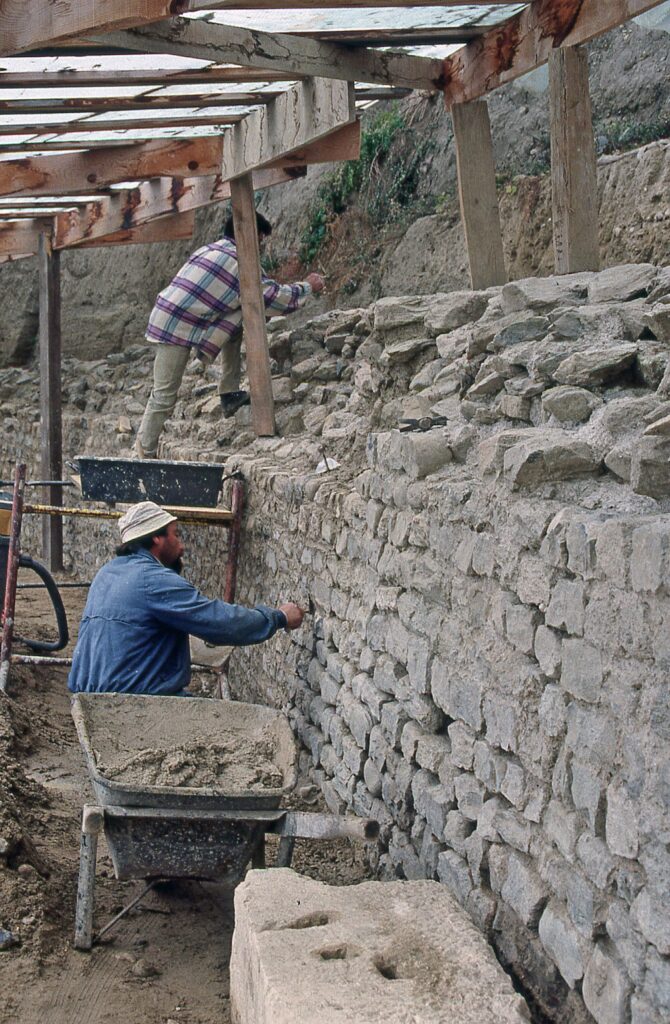
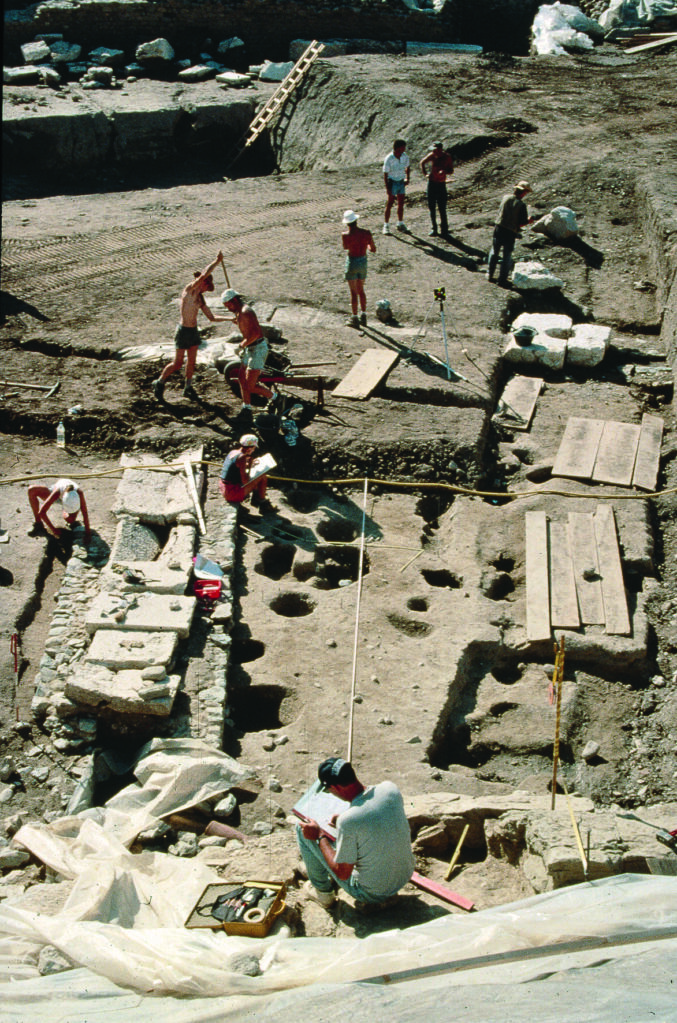
Preserving the monument
Restoration work was carried out between 1998 and 2001 to consolidate the unstable areas of the masonry wall of the arena and rebuild certain collapsed sections. Drainage systems were also installed along the outer facings of the arena walls to protect them from infiltration. In order to prevent the restored structures from being weakened by the elements, a temporary cover was put in place in 1997 to delay the deterioration process.
A maintenance and preventive conservation protocol is currently being developed. There are indeed risks of alteration of the remains, which have been identified as being of a high degree of authenticity.
